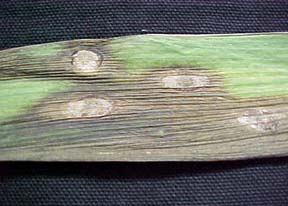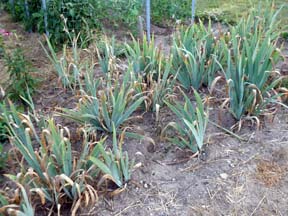Heterosporium leaf spot
Editor’s note: This article is from the archives of the MSU Crop Advisory Team Alerts. Check the label of any pesticide referenced to ensure your use is included.
I like to garden in my spare time. My yard is certainly a work in progress; it would never be consider a showcase garden, not even close. Over the past few years, I have taken a bit (ok, a lot) of grief from some of my diagnostic lab colleagues for the insect and weed problems I have been challenged with. But the story has recently changed; my colleagues have been struggling with a few disease problems in their gardens. The most recent problem caused severe leaf spotting/blighting on some family heirloom iris plants. My colleague wasn’t happy that he needed my diagnostic expertise.
Upon examining some of the infected iris leaves, I detected the fungal pathogen Heterosporium. Heterosporium was previously known as Didymellina, so you may know the disease as Didymellina leaf spot.
Disease symptoms begin as tiny brown spots with a water-soaked border. As the disease progresses, these develop into irregular spots with grayish centers and dark borders. Over the season, the leaf spots enlarge and coalesce. Leaves begin to die back from the tips and the dieback progresses downward. The disease severity worsens after blooming.
The disease weakens the plants causing less prolific blooming the following year. Several consecutive years of disease can cause plant death. The rhizome forming types of iris (rather than bulb-forming) are generally more susceptible to this disease.
The fungus produces its spores within the foliar lesions. Spores are then splashed to adjacent plants by rain and irrigation water. The disease can easily be introduced on infected plant material.
Disease control needs to begin with good sanitation. Affected leaves should be pruned back and removed. If disease is severe, broad-spectrum fungicides can be used to protect the remaining foliage. The pathogen overwinters on leaf debris and sporulates in the spring, beginning the cycle again. At the end of the season, it is especially important to prune back the foliage and remove it from the site. Incidentally, my colleague neglected to do this last fall; he won’t make that mistake again!



 Print
Print Email
Email




